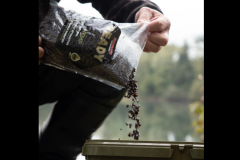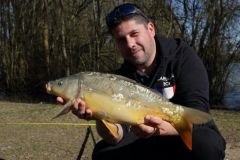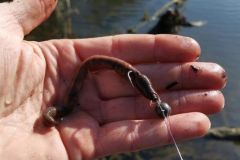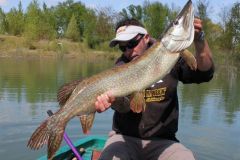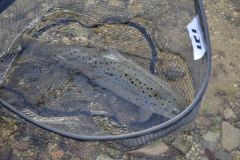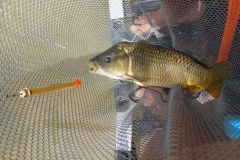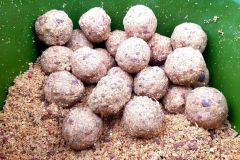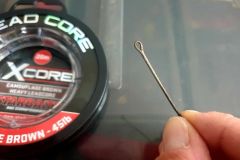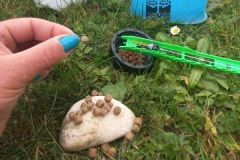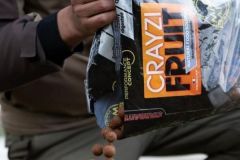Carp fishing in carpodromes
Curious to know and understand the functioning of the stuffing boxes and weight points, these are two things that anglers outside the carpodromes ask themselves.
Carp fishing with a big rod is a technical and sensational fishing. Contrary to the thought of fishing in a pond, the fish are so educated that fishing is very technical. In the summer season, fishing is very sporty, because the rhythm of bites, baiting and the quantity of fish requires a rhythm and physical condition. In the winter season, as soon as the temperature drops, you need to be very technical and patient.
Anyway, this fishing requires equipment, preparation and knowledge. A constant questioning and reflection.
Landing nets adapted to carp fishing
The carp is a fish that we protect as an angler. The care of fishing it, taking it out and putting it back in the water. That's why we use first of all squirrels designed and adapted to carp. The various brands have studied and offer on the market of the scoops with very fine mesh. Contrary to the old models, where the fins could hang in, the evolution of the products today respects completely the fish. An ease to receive the fish, unhook it quickly and put it back in its element. It is important to know that on the totality of the carpodromes, the hooks used are without barbs.
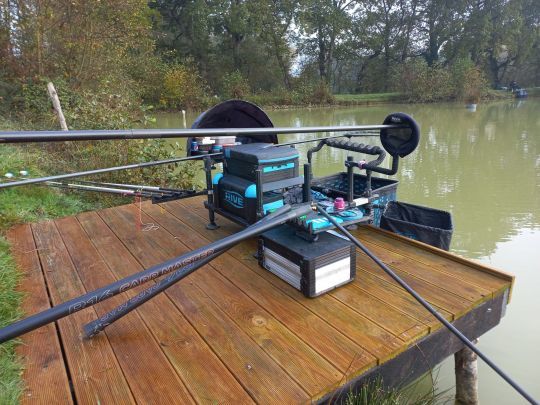
In addition to the landing nets, we also place cushioned landing mats at the foot of the stations. If the head of the landing net is placed slightly on the station, the fish is then protected. Knowing that during the catch of the fish, we put and block the head of landing net between the legs.
Crate and weighing
Then comes the stuffing. We must know how to estimate the weight of our fish. Indeed, in the basket, a maximum of 25 kilos is tolerated. We must therefore know how to calculate our fish to be under this weight. By respect of the fish, a rule has been put in place. If a fisherman exceeds the 25 kilos of the catch, he is penalized. This is called a "TILT". The weight above 25 kilos is not counted. Whether it is a few grams or several kilos.
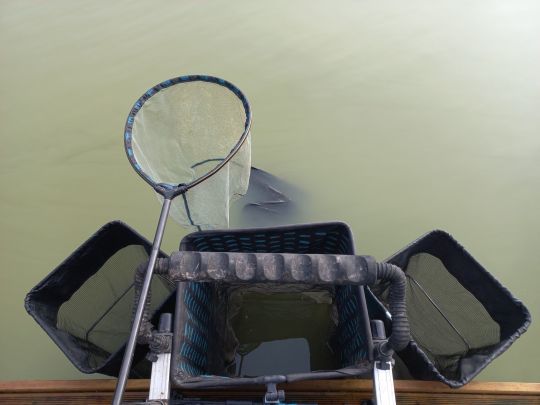
This is the main reason why in front of the stations we put several fishes. Also, if we catch a big fish, we put it in a separate basket, so as not to damage it, but also not to damage the smaller fish already in the basket. And finally, if we catch other species, such as carassins, breams, roaches, tench..., we put these fish in a separate pot as well.
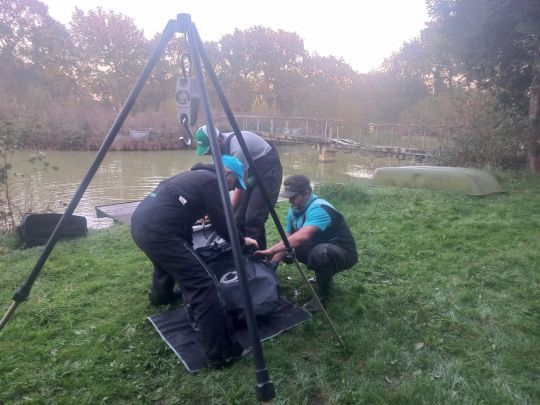
The weighing is done at the end of the fishing. We use weighing bags designed and adapted for this purpose. We place underneath a reception mat also underneath and in addition. The fishes are weighed with electronic scales with fast catch. In 3 seconds, the weight is blocked, it is indicated, the fishes are immediately put back to the water in the biggest precaution.
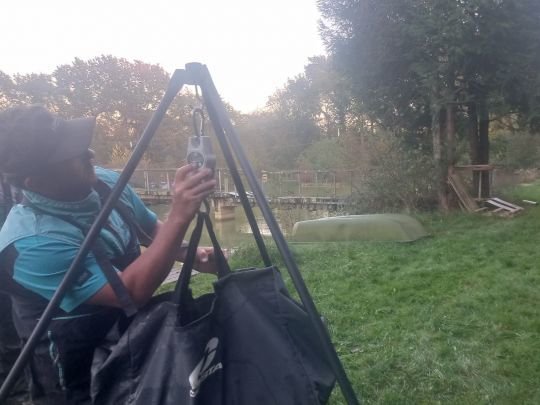
We then add the different weights of the stuffing boxes to calculate the total weight. We do not speak in kilos, but in grams. For example, a basket weighs 24,840 kilos, the scale indicates 24,840 g. The correspondence of 1 g is equivalent to 1 point. We then transcribe it into 24,840 points.
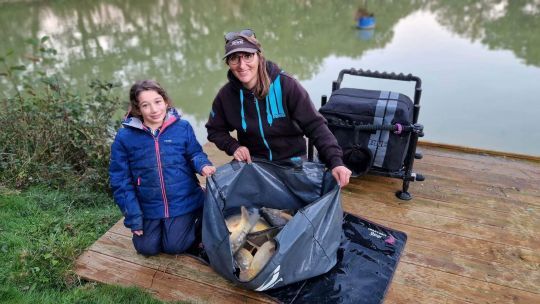
The classifications are generally done by sector in order to have a regularity on the water. And then by alternating general classification.




